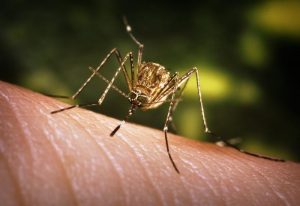By NewsDesk @infectiousdiseasenews
Toronto Public Health has received a positive laboratory report identifying Toronto’s first reported case of West Nile virus for 2020 in an adult resident. West Nile virus is an infection transmitted to people through the bite of an infected mosquito.

While the risk of getting infected in Toronto is currently low, Toronto Public Health advises residents to take these precautions to avoid bites from infected mosquitoes:
- Wear light-colored clothing, long pants and long-sleeved shirts when outdoors.
- Apply insect repellent containing DEET or icaridin and follow the manufacturer’s instructions.
- Take extra care during peak mosquito-biting hours, dusk and dawn, by using repellent and covering up.
- Make sure your home has tight-fitting screens on windows and doors.
- Remove standing water from your property, where mosquitoes can breed. Standing water includes any water that collects in items such as buckets, planters, toys and waste containers.
“While the likelihood of becoming infected with West Nile virus is low in our city, now is a good time to remind residents of simple actions they can take when enjoying the outdoors to further minimize the potential risk. These actions include wearing insect repellent and light-colored clothing, long pants and long-sleeved shirts to prevent getting bitten by an infected mosquito”, Toronto’s Medical Officer of Health, Dr. Eileen de Villa said.
West Nile virus symptoms usually develop between two and 14 days after a person is bitten by an infected mosquito. Symptoms may include fever, headache, nausea, vomiting, body aches, skin rash and swollen lymph glands. Older individuals or individuals with compromised immune systems are at higher risk of severe illness. If you or a family member has concerns about any symptoms, contact your health care provider.
In 2019, nine laboratory-confirmed human cases of West Nile virus and 10 positive mosquito tests were reported to Toronto Public Health. An important part of the City’s mosquito surveillance and monitoring is larviciding city catch basins and stagnant water sites where immature mosquitoes (larvae) have been identified reduces the risk of West Nile virus.

